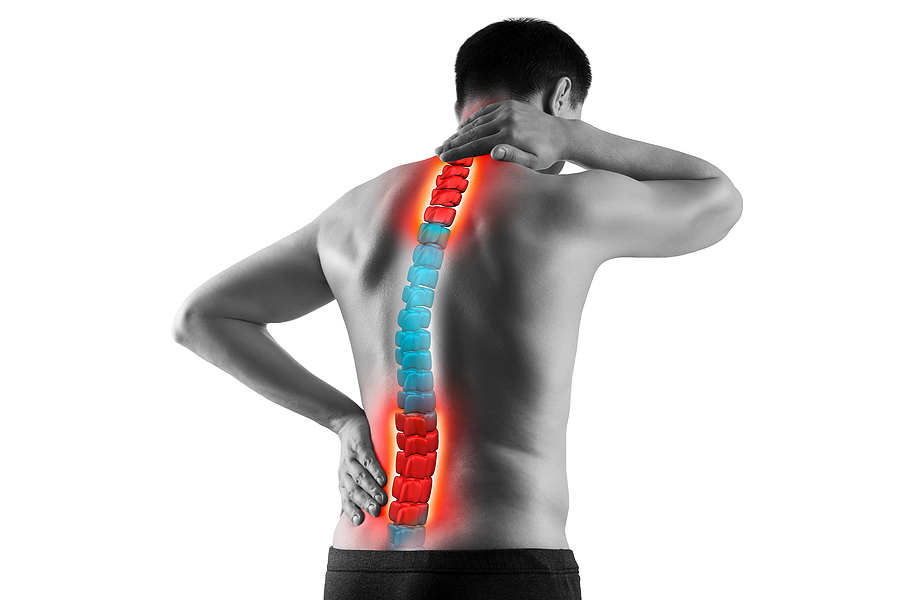
Eight-time Olympic gold medalist and 11-time world champion Usain Bolt is one of the best runners in sports history. He still holds the record for the 200-meter and 100-meter dash and the 4 x 100-meter relay race.
On the outside, “Lightning Bolt” is an exemplar of athletic excellence. Many people do not know that he has achieved victories on the race track even as he endured pain and discomfort due to scoliosis.
Scoliosis is an abnormality in the curve of the spine. If a C-shaped or an S-shaped spinal curve is at least 10 degrees, it is already a sign of this spine problem. The exact causes of this condition are varied and can include trauma, cerebral palsy, and muscular dystrophy. Cerebral palsy is a set of disorders that affect a person’s ability to move and use muscles, resulting in movement difficulty and poor posture. On the other hand, muscular dystrophy is a disease that damages and weakens a person’s muscles due to the lack of a substance called dystrophin. People with this ailment have poor body coordination and have difficulty walking and even swallowing.
But frequently, its cause remains unknown in the medical world. Based on the number of people who have worked with a scoliosis chiropractor, around 67 percent have mild cases, while about 10 percent have moderate to severe conditions of this disease.
Studies also suggest that a neck injury or misalignment could be a cause of scoliosis. Whenever the atlas bone (or C1 vertebra) and the axis bone (C2 vertebra) are misaligned, the alignment of other vertebrae along the spinal column may suffer.
Neck injury or misalignment does not only happen to children or adults but even to newborns. Trauma from childbirth, caused by excessive pulling of the baby’s head as it exits the birth canal, is a possible cause of neck misalignment. Later on, as the baby develops, the misalignment may remain undetected or not addressed, leading to scoliosis.
Some of the common signs of a curved spine are:
When visiting a scoliosis chiropractor they may ask you questions to determine what type of scoliosis you have. While the signs are the same, there are actually three kinds of spine curvature:
The condition when the spine is curved, but the exact cause is unknown. Most cases of a curved spine are idiopathic and are commonly detected among adolescents.
This is the so-called inborn type of scoliosis that began during the very early stages of a baby’s development in the mother’s womb. Usually detected at the early age of a child, certain deformities or abnormal development in the womb leads to misalignment in the spinal column.
Of the three types, the cause of the spine curvature is due to other disorders such as muscular dystrophy and cerebral palsy. Trauma to the spinal cord is also a leading cause of this disorder.
A visit with a scoliosis chiropractor would significantly help in the examination and detection. In many cases, ignore or late detection of the condition causes pain, discomfort, and anxiety, especially for older people.
While some adapt well and feel little or very tolerable levels of pain, others deal with excruciating nerve impingements, ligament damage, and other health problems, including:
These complications make life uncomfortable for the person with a curved spine since the pain and discomfort interrupt work, and just about every daily physical activity.
In most instances, people with a curvature of the spine can live fairly active and healthy lives. Those who cannot tolerate the pain caused by the spine curvature opt to:
These are viable options that can be considered with proper advice from a health care provider. A person with such a condition can also benefit by trying the safe, natural method used by practitioners of the NUCCA procedure.
The NUCCA chiropractic applies a gentle technique on the upper cervical spine, promoting proper alignment of the spinal column beginning with the position of the head and neck. Over time and after a series of adjustments, the spine will frequently become more and more balanced and have improved structural alignment.
A NUCCA scoliosis chiropractor also provides advice on better taking care of one’s neck to avoid trauma, muscular stress, and other possible causes of misalignment.
You, too, can live an active and victorious life like super athlete Usain Bolt. It does take getting appropriate care for your spine problems.
To experience lasting relief from scoliosis-related pain and discomfort, visit a NUCCA doctor near you today.